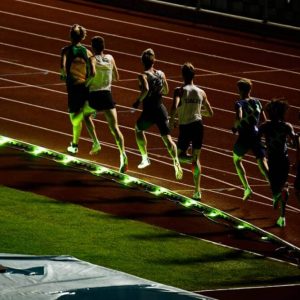Nothing quite gets the blood pumping as an extreme rush of adrenaline as athletes thunder their way across a 100-meter long distance. On any other day, 100 meters is a relatively negligible distance to travel. But on the tracks, any distance at all is not to be taken for granted. The numerous athletic events involving the use of tracks make these tracks extremely important. Top quality race track lights are some of the essential features of a standard track.
Lightening in a track makes all the difference. However these track lights being discussed are not only useful in a track. They could be used at any large stadium or wharf. These lights are highly effective in lighting up substantially large spaces. Their production is relatively differ from that of regular light bulbs and their holders.
How are Track Lights Unique?
There are numerous unique features of the track lights. We could consider a lot of them peripherally, but we will not. For this article we will focus on one aspect. The production of these lights is quite interesting, so we will consider that first.
While we will eventually focus on one, these are few of the unique features of the lights:
- They use die casting technology in their production
- Recent track lights possess rotatable modules
- They possess galvanized steel brackets (highly corrosion-resistant)
- They ensure reduced light pollution, etc.
Production of Track Lights
They are made or forged using the die casting technology. This is a manufacturing process which requires the use of high temperatures as well as pressures. It typically involves the forging of complex metal pieces. These pieces are forged in reusable metal components or molds referred to as dies.
The metals which experience or are put through die casting are typically non-ferrous alloys. This generally means that they are not iron based. The most common and typical examples are zinc and/ or aluminum. The alloy is first melted and then as a result of pressure differential allows to flow into dies of required shapes. The melting is done in furnaces.
For metals which require higher temperatures to completely melt, extra care has to be taken. This is why a separate kind of die casting machine is used in handling these metals. The machine is referred to as the Cold Chamber Machines. This machine is used in handling alloys such as aluminum which melts at higher temperatures.
While for those aloud which melt at relatively lower temperatures, they also have separate treatment. They are processed using the hot chamber die casting machines. This procedure is vital because of alloys such at Zinc. Alloys here melt relatively easier than those of the cold chamber die casting technique.
The next step after injecting the molten alloys into dies is referred to as casting. It basically involves the rapid cooling of the alloys in the dies. This obviously leads to a more rapid solidification. This is a basic summary of the entire die casting process for track lights.
Summary
This process is used in producing the bulk of the parts of the track lights. This means that the lights remain more durable than regular lighting. This is essential as they are mostly used outdoors.
